




A lot is going on at LTC right now. We are finishing the second year of our five-year strategic plan, and you should be proud of what is being accomplished and where we are headed.
Some big things are obvious. You can double your impact right now through a matching gift from the Dragonfly Fund. Whether you support a special land project such as Chigidaaki: Place of the Big Hill Working Forest Reserve or renew your membership support, your gift will be doubled by year end (see more on page 9). You will read how Dick and Betsy DeVos just donated a conservation easement on a spectacular stretch of Lake Michigan. This is an increasingly uncommon opportunity to protect wild Great Lakes shoreline (see page 4). A rare orchid was recently found in the Les Cheneaux region, and our land protection team is on pace to close one of our highest annual numbers of land protection projects. A vast amount of additional support and exciting news could be shared here. But suffice it to say, we can be optimistic about LTC’s mission and our future.
Our Board is vibrant, engaged, and leaning in with their support. Our volunteers make our mission buzz, accomplishing so much while adding FUN to our team. And your support has never been stronger, not only fueling the mission but testifying to its importance.
Another cue to me that LTC is running strong is that when I take time away, your team leads the mission with
by Executive Director Kieran Fleming
excellence, without me. I suppose that’s not something I should say out loud; we all want to believe we are a key cog in the wheel. But this team of staff and volunteers is exceptional, and nothing is missed in my absence. And that makes me proud.
Of course, it’s not always roses and lollipops. Some of this work is hard. Troubleshooting is a daily requirement for all of us. But you, our supporters, always help us see the bigger picture. I find it interesting that the few times we see critics on social media (usually in the “comments” section, where happiness goes to die), the protective responses from LTC supporters quiets the criticism right down.
We never have to enter the fray because most people see that our programs are a place where we can drop our politics and do work that improves the lives of all who live in and visit this incredible region. We can relate to it ourselves, in our own way. The natural resources are directly or indirectly why we are all here.
I love that LTC’s mission can be that beacon of light in today’s often divided culture. It’s probably my single greatest source of professional happiness.
So, while there is a lot going on, it is motivated by sheer eagerness to do this good work with you. For this, we are simply grateful.

LTC members support valuable initiatives such as our Ecological Conditions and Response (ECAR) Program, making it possible to capture this wolf on trail camera at the Edna and Oliver Birge Nature Preserve in Mackinac County. Read more about ECAR on page 7.

Inspired by a heartfelt donation, a creative collaboration has brought four local entities together: North Central Michigan College, Little Traverse Conservancy, the State of Michigan, and the Little Traverse Bay Bands of Odawa Indians The result: nearly 13 acres and 1,700 feet of Crooked Lake frontage will now be permanently left in its natural state.
Shortly after her husband Larry passed, Pat Kaine fulfilled the couple’s shared wish to support North Central Michigan College by donating two parcels of land on the shore of Crooked Lake to the college.
“What started with the Kaine family’s generous gift led to multiple partnerships guided by the Little Traverse Conservancy that both strengthen the college’s core mission—opening doors for students—and safeguard the natural resources that define northern Michigan. This investment ensures hands-on learning today and a healthier environment for the communities our graduates will serve tomorrow,” explained David Ronald Finley, President of North Central Michigan College.
Knowing the Kaine family’s deep connection to Crooked Lake, Finley reached out to LTC to explore a conservation outcome. “This land was a very high priority for protection,” said LTC Executive Director Kieran Fleming. “We knew we just had to determine the right funding approach.”
Since the property is located across the road from the State of Michigan Oden Fish Hatchery, LTC first contacted their staff, who readily got on board.
“The acquisition of these properties provides additional protection of Oden Creek, which flows from the Oden State Fish Hatchery,” said Randy Claramunt, Fisheries Chief for the Department of Natural Resources. “It creates recreational opportunities for hunters and anglers while protecting the parcels from potential future development.”
Because state funding could take more than a year, LTC offered to purchase the land and hold it until the state could finalize its funding.
In the meantime, Fleming received a call from Doug Craven, Director of Natural Resources Department for the Little Traverse Bay Bands of Odawa Indians (LTBB), who had noticed the real estate sign.
Crooked Lake lies near the headwaters of Emmet County’s Inland Waterway, a 42-mile chain of navigable lakes and rivers that flow into Lake Huron at Cheboygan. This historically vital waterway—used for transportation, trade, and sustenance—remains culturally and environmentally significant to the Tribe.
In November, LTBB purchased the eastern parcel from the Conservancy. “Our Tribe and the Little Traverse Conservancy share the core mission of protecting our lands and waters for the present and future generations,” said Tribal Chairperson Winnay Wemigwase. “We appreciate the opportunity to join forces as we did years ago with the Susan Creek and Taimi Hoag Nature Preserve adjoining natural areas, and are grateful for the present opportunity for the Tribe to acquire and permanently preserve this Crooked Lake parcel in its natural state.“
Fleming also recognized Chuck and Christine Kneese, who made a generous contribution to help offset the Conservancy’s costs while the property was held for the state to purchase it.
“This was one of those creative multi-win projects that has met numerous community goals at once,” Fleming said. “It is rewarding when so many of us can work together with a shared vision.”

Northern Michigan’s lake shore is a place where time seems to slow. For nearly five decades, Dick and Betsy DeVos have been drawn to this region, finding solace on its waters and land. “The natural beauty and tranquility are magnets for us, as they are for so many others who head ‘up north’ to get away,” said Dick and Betsy.
The DeVos family has long cared for these 16 stunning acres on Lake Michigan north of Harbor Springs. When it came time to sell the property, they saw an opportunity to leave a lasting mark. Before the sale, they donated a conservation easement to LTC. This ensures that the property’s woods, dunes, and lake shore will remain largely natural. “The opportunity was really compatible with our original reason for purchasing the land— to protect a beautiful piece of waterfront,” the DeVoses said.
The family also welcomed the buyer into the process so the easement could reflect their plans for the land. The buyer, who wishes to remain anonymous, immediately understood its value. “If you talk to most estate planning attorneys, they will tell you that people don’t care about the nonliving. I actually care about the 10th generation and on down the road. And so for us, it was important to put something in place,” the buyer said.
A conservation easement is a voluntary agreement between a landowner and the Conservancy. It limits what kind of development can happen on the land, while the landowner still owns the property. Once the easement is signed, it stays with the land forever, even if it is sold. The Conservancy ensures the rules of the easement are followed for all future owners. Conservation easements are not open to the public.
The collaboration between donor and buyer resulted in a lasting legacy, with the easement limiting development. Working with the Conservancy proved to be a rewarding experience for both parties. “The LTC team is very sensitive to the uniqueness of each situation and of the people involved. We’d certainly encourage all others who are similarly situated to consider working with LTC to preserve and protect this beautiful part of our great state,” Dick and Betsy DeVos shared.
This beautiful story shows that even if you plan to sell your property, you can still protect it. The DeVos family’s foresight, and the buyer’s own commitment to the future, ensured that a priceless piece of Michigan’s lake shore will remain natural for generations to come.

Thorne Swift Nature Preserve looking south towards Little Traverse Bay. This preserve lies north of the newly easement-protected land.

Black Lake has been a place of happiness for the Brown and Hendricks families for five generations. In 2020, Valerie Hendricks created the original 23-acre Caroline and Willis Brown Nature Preserve on Black Lake in honor of her grandparents. “My grandparents’ cabin was always our favorite place, you know. Even now, once spring hits, I cannot stop thinking about getting up there. Then, when fall rolls around, the sadness of leaving hits.” For Valerie, honoring her grandparents who made their summers so memorable while protecting the lake that provided those memories was invaluable. “Preserving this land for everything that inhabits the area is so important,” she said.
Earlier this year, Willis Brown, Valerie’s brother, made it possible to add 120 acres to their grandparents’ preserve. His generosity and desire to honor his grandparents now provides access to the preserve from the road. “I had good fortune when I approached LTC about making a donation,” Willis said. “A property adjacent to the Caroline and Willis (my grandfather and namesake) Brown Nature Preserve had just become available. Ecologically, it is better to have a large preserve than two separate ones. I was happy that the addition is wooded as one of my favorite things to do in early summer is walk among the trees with the Merlin app on my phone and ‘see’ the variety of birds here.”
While the preserve is open to the public, no trail plans currently exist. Stewardship staff will be refining the management plan for the entire preserve over the coming year.
“Preserving this land for everything that inhabits the area is so important. I would encourage others to think about how they can make an impact in any way they can with the Conservancy.
- Valerie Hendricks
by Dylan Klinesteker, Director of Environmental Education
October in northern Michigan can be a busy month. After many of our seasonal community members have packed up and headed to warmer climates, those who remain are hard at work preparing for the changing season. Red squirrels can be seen gathering their harvest at the Allan and Virginia McCune Nature Preserve, stashing food away in anticipation of winter. Mushrooms appear along the trail at the Round Lake Nature Preserve, releasing spores that ensure their continued success in the forest soils and decaying logs. Many trees begin breaking down their chlorophyll, reabsorbing nutrients before letting their leaves fall to the forest floor, revealing vibrant yellows, reds, and oranges in one final seasonal display. And throughout it all, the Environmental Education Department at Little Traverse Conservancy was busy sharing these changes with nearly 500 students in October alone.
On the chilly morning of October 6, LTC Education Specialist Izzy DeBord met two groups of 14 kindergartners from Shay Elementary in Harbor Springs for one-hour learning sessions at the Offield Family Working Forest Reserve. Their task for the day was to learn about leaves. After a brief introduction, the
forest filled with the excited voices of five- and six-yearolds searching for leaves, especially ones they found special enough to place in their paper collection bags, which they would later decorate with a leaf rubbing. Izzy guided them in noticing the unique details of each leaf and in recognizing the type of tree it came from. Whether a student selected a sugar maple leaf or one from a paper birch, the experience provided a meaningful connection to the ongoing cycle of renewal in their local environment.
Now that the leaves have fallen, another seasonal shift is underway. The Environmental Education Department at LTC is taking time to plan, find inspiration, and prepare for the next wave of programs. However, even during this quieter season, you may still find us bundled up at a trailhead, waiting for a big yellow school bus to arrive, ready to welcome another group of students eager to step outside and learn about their community firsthand.
Izzy DeBord with Harbor Springs kindergartners at the Offield Family Working Forest Reserve/photo by Sue Kurtz

LTC’s Ecological Conditions and Response (ECAR) Program is elevating the way we care for our lands. With support from our partners, our staff has inventoried and mapped habitats on all LTC-owned properties! With this information, we’ve been able to identify approximately 10 top-priority habitats and roughly 120 additional high-priority habitats. These priority areas will guide our management efforts as we put together our 2026 work plans. This prioritization is not a rigid rule, but serves as a practical roadmap for using our time and resources more effectively as land stewards. In the coming year, we will address several of the key challenges identified within the very top-priority sites.
ECAR data strengthens our capacity to respond to the needs of rare species, such as Houghton’s goldenrod. This plant is a showy flower that is only found on the northern Great Lakes shoreline, primarily growing in limestone cobble shores, sandy areas, beaches, and wetlands near beaches. It is identified from other goldenrods by having a relatively flat arrangement of the many little flowers it holds. Also, the length of its petals is longer than its closest resembling sibling goldenrod.
In 2025, we completed a more detailed assessment of this species on our lands and recorded eight populations.

A whopping five of these populations had not been documented by LTC staff before. With these findings, LTC can take key steps to protect Houghton’s goldenrod populations. For example, we worked with the Michigan Department of Transportation (MDOT) to designate a stretch of M-134 roadside in the Upper Peninsula as a protected area. We are also planning a habitat improvement project at one of the sites supporting this species to help it thrive.
Having this baseline data gives us a clearer picture of what lives here today, and helps us make decisions that will provide rare and uncommon species a real chance to thrive in the years ahead. Houghton’s goldenrod is just one of numerous unique species for which we are collecting data. Others include dwarf lake iris, Lake Huron Locust, little brown bat, and Hine’s emerald dragonfly—each play a part in the rich web of life that makes northern Michigan’s Great Lakes region so special.
Funding support for ECAR comes from the U.S. Fish and Wildlife Service through the Great Lakes Fish and Wildlife Restoration Act and Coastal Programs and members like you. Visit www.landtrust.org/ecar for more details.


A mile of railroad bed that is part of the Don & Eileen Klein Nature Trail on the Roger’s Family Homestead Nature Preserve was recently upgraded to universally accessible standards last summer. This enhancement gives visitors a longer trail experience, if desired. Parking for the Klein trail is at Sportsman’s Park or the preserve parking areas at 7944 Rogers Road or 501 Echo Street, East Jordan.

Two major improvements at the Hathaway Family’s Regina Caeli Nature Preserve in Mackinaw City now make it easier for visitors who prefer or require a flatter surface to enjoy a scenic loop through the woods. The crushed aggregate trail surface and new parking area provide smooth, stable footing— similar to that found on the nearby North Central and North Western State trails, both of which reach their northernmost points at the edge of downtown Mackinaw City.
The newly completed Tip of the Mitt Trail—a community trail linking the east and west sides of the peninsula’s tip—is also accessible directly through the Hathaway Preserve. Trail maps and two interpretive signs about the Tip of the Mitt Trail can be found on the preserve (see left).
The 92-acre Hathaway Family Regina Caeli Nature Preserve, donated by the Hathaway Family in 2017, offers visitors a peaceful place to explore at 1047 W. Central Avenue, Mackinaw City.
Your generosity goes directly towards making incredible work, like the projects featured below, possible. You can direct your gift to bring one of these projects to completion by the end of the year.

Ensuring a vibrant future of farming and land preservation in northern Michigan, the Farmland Conservation Initiative aims to protect precious farmland through conservation easements, all while empowering farmers to continue their vital work.
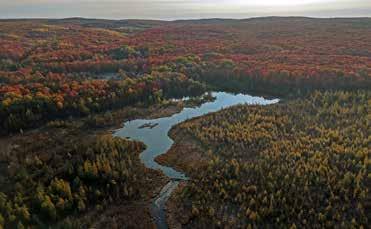
By bringing together a network of conservation-minded partners and resources, the Maple River Initiative ensures that when critical properties become available within the Maple River Watershed, LTC is ready to act. You can help guarantee that the Maple River remains a place of beauty, habitat, and inspiration – for today and for generations to come.

Another 96 acres with ½ mile of frontage on the Shelldrake River were recently protected through the Wild Shores Initiative. You can help protect even more shoreline properties, adding to the over 1.5 miles of Great Lakes shoreline protected through this Initiative.
76%76%

LTC purchased and protected this impressive 654-acre reserve with views of Lake Charlevoix and Boyne City in May. Caring for a property of this magnitude is a significant commitment. LTC is fundraising through the end of 2025 to ensure the long-term stewardship and care of this land.
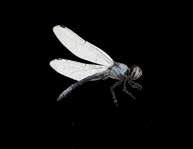
83%
Your gift will be matched by The Dragonfly Fund. To learn more, visit

Enji-minozhiiyaamigak: The Place of Peacefulness
Nature Preserve was a landmark acquisition for LTC in December of 2023. These 56 acres of forest along a quarter mile of Little Traverse Bay shoreline have historically been a place for the owners and neighbors to wander, reflect, and feel at peace. Now, less than two years after it was purchased to become a nature preserve, this unique preserve features a half-mile, universally accessible trail leading to a platform overlooking Lake Michigan. The improvements were made possible by LTC members, volunteers, staff, and nearly 160 generous donors.
During the fundraising campaign, the primary donor had two requests: 1) that the signs at this preserve be translated into Anishinaabemowin; and 2) that a universally accessible trail be built so that everyone— parents with strollers, people with mobility limitations, or someone just seeking to get outside—could enjoy being outdoors. Offering Lake Michigan access between Petoskey and Charlevoix, the preserve is just wild enough to heighten your senses, but close enough to feel like home.
Charles Dawley, LTC Technology and Stewardship Coordinator, designed and managed the construction of the platform. With the help of 25 volunteers who donated 205 hours to the project, the platform was completed in late August. Stairs lead to the cobbled lake shore. A unique sculpture sits along the side of the platform and explains the historical presence of the Little Traverse Bay Bands of Odawa Indians around Little Traverse Bay (see page 12)
On August 28, the LTC office closed its doors so all staff could gather with more than 100 community members for the dedication. Chief Development Officer Emily Hughes celebrated the many donors who made this possible, with special acknowledgment to Jennifer
Adderley, Bob Coletti, the anonymous lead donor in partnership with the Charles M. and Joan R. Taylor Foundation, and the Van de Grift family, the previous owners who had cared for and kept the land free of development for decades.
Kevin Willis, retired Chief Conservation Officer with the Little Traverse Bay Bands of Odawa Indians, shared the meaning and pronunciation of Enji-minozhiiyaamigak. He also explained that he and many relatives have lived in the area for generations and intimately know the land.
A neighbor to the property, JoEllen Rudolph, reflected on the importance of a trail like this to her and to others with mobility restrictions who seek more opportunities to enjoy nature.
We encourage you to discover the beauty and solace of Enji-minozhiiyaamigak: The Place of Peacefulness. Parking is available at 6413 Division Avenue, Charlevoix. From the gas station in Bay Shore, turn west on Townline Road and then left on Division Road where parking is a quarter mile down on the right.
HOW DO I PRONOUNCE THE PRESERVE NAME?
EN-JI-MINO-ZHII-YAA-MI-GAK
EN (as in ten) JI (as in gym) MINO (as in minnow) ZH (as in measure) II (as in knee) YAA (as in yacht) MI (as in mitten) G (as in gum) AK (as in tuck)
Scan the QR code below to hear the pronunciation, to watch a video of the dedication, and to learn more about this unique property and trail.


Numerous

After LTC’s Annual Meeting on August 5, members walked the almost





Benjamin Cheney Post ice storm trail maintenance
”I have loved being able to directly exchange breath with the trees. I am grateful to be deepening my understanding of the lines of force and potential energy of trees, both standing and fallen.”

Sue Fruchey Invasive Species Support
“I’ve really enjoyed contributing to the variety of stewardship projects that LTC has been doing and revisiting the beautiful natural communities we have up here. What a wonderful summer and fall it has been!”
Funding for these positions was provided by grants through the Petoskey-Harbor Springs Area Community Foundation and the Charlevoix County Community Foundation. Thank you as well to TC Energy and St. John’s Episcopal Church Community Fund for their financial support for ice storm-related recovery and restoration.
The Marker Tree Sculpture at Enji-minozhiiyaamigak: The Place of Peacefulness Nature Preserve
The lead donor who helped make Enjiminozhiiyaamigak a reality requested that interpretive signage at the preserve be translated into Anishinaabemowin—a meaningful nod to the enduring presence of the Little Traverse Bay Bands of Odawa Indians (LTBB) on this land. Several members of the Bay Shore Band live near the preserve today.
Former LTC board member and LTBB Director of Archives and Repatriation, Eric Hemenway, wrote the interpretive narratives, while the Tribe’s Language Department, led by Netawn Kiogima, provided the translations.
In continued collaboration with Eric and LTBB GIS Director Alan Proctor, a map was created depicting the historical locations of LTBB communities around Little Traverse Bay. To showcase the map, students from the Industrial Arts Institute’s Spring 2025 class in Onaway crafted a seven-foot-tall steel tree sculpture, inspired by the traditional “marker trees” once found around Bay Shore. Pro Image of Traverse City/Petoskey then designed the map to fit perfectly within the tree’s branching form.
This one-of-a-kind interpretive piece invites visitors to reflect on the deep and ongoing connection of the Odawa people to the very shores where they stand.

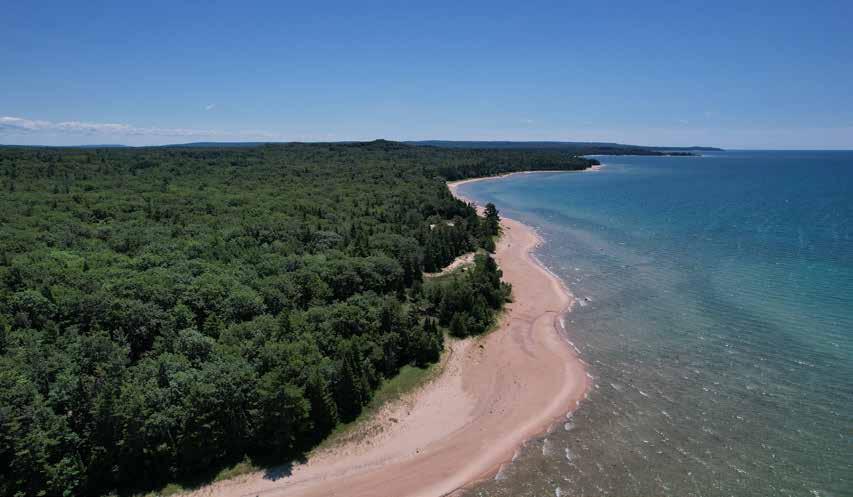
On August 15, friends and family gathered to dedicate a new sign installed at the Lakeview Parking area of Wilderness State Park on Sturgeon Bay. The sign acknowledges the late Kathy Bricker’s role in protecting 750 acres of Sturgeon Bay while she was executive director for Little Traverse Conservancy in 1991. Her husband Jim (pictured far left in photo to right) remarked: “More important than honoring the individual (Kathy) is showing people that one committed person can make a difference. People will see the sign and realize that maybe I can do this too. I can save a portion of nature.”
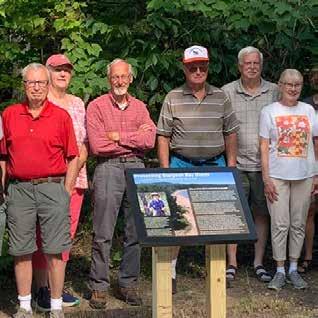
The Conservancy’s preserve and reserve signs are arguably LTC’s best communication tools. With hundreds scattered around our fivecounty service area, they catch your eye as you drive past them. But they also endure the harsh weather of northern Michigan year-round. A group of skilled volunteers decided they could help us keep these signs looking sharp for years to come. This hard working crew now cleans, patches holes, and replaces rotted wood before the sign gets sanded, a fresh coat of paint, and a new vinyl logo if needed. This is an incredibly time-consuming task requiring great attention to detail and an estimated 5-6 hours per sign!
We are so grateful to our volunteers, specifically John Baker, Pat Alguire, and Richard Jenkins (pictured below left to right) who are making this project possible. So far, over 30 signs have been restored!
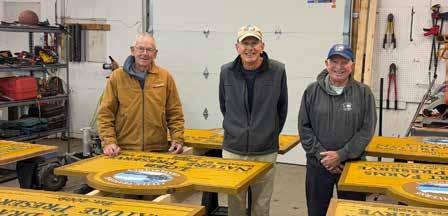


by Harry Santen, member since 2000
Harry Santen and his wife Ann have loved northern Michigan for 80 years. They spend their summers at their Crooked Lake cottage in Alanson and return to their Cincinnati homestead in the winter. As avid bird hunters, they love being outside, especially together. Harry is also a self published writer who enjoys writing poetic stories about his time spent outside. One of Harry and Ann’s favorite properties to walk is the Allan and Virginia McCune Nature Preserve in Petoskey. Below, you will be transported to this preserve through Harry’s writing. Enjoy!
We love the way northern Michigan cradles numerous fascinating trails through woods, hills, and valleys, keeping company with neighboring lakes and streams. For us, a similarity exists among the trails, yet each one sends its own message and interesting personality.
On a summer morning, my wife Ann and I walked the Allan and Virginia McCune trails. At my age of four score and fifteen years, I used my ski poles from bygone days for balance. They were a good idea. They worked well. As we walked, each of our five senses came alert and alive, bringing recognition and pleasure.
Our footsteps undulated back and forth on the well-trodden path through the depth of the forest. Occasionally, the path steepened, but it didn’t do switchbacks. It just curved gently down, in and out, back and forth, sometimes around the surrounding trees. If there is such a profession, a trail architect artistically developed this trail.
The path has years and years of trampled-down leaves, now invisible, bringing cushioned softness to each step. We needed to focus directly on the path to follow its weaving direction; otherwise, aimless woods wandering would have left us lost. We didn’t bring along a compass, but will in the future.
Small beams of sunlight filtered down, sometimes halted by leaves, but often finding a way to the ground. These small patches of bright sunlight scattered the path, leaving their mark. The path had painted its own canvas, accompanied by the whisper of the wind, whose breeze brought coolness to the air.
When the canopy overhead is dense, the undergrowth on the ground doesn’t flourish. The forest floor is clean. When more light is present, the floor is no longer clean because black raspberries seek the sunlight along the open paths, bringing flavor to a walk. Blueberry bushes remind us that earlier in the summer, we could have had good pickings.

Walking was not just for looking and feeling but also for listening. The song of the Red-Eyed Vireo accompanied our journey. The Black Capped Chickadee added its staccato notes. We listened to hear the plaintiff call of the Sandhill Crane as it passed overhead.
Every trail can bring surprises. As we rounded a bend, the strong smell of nutmeg or cloves wafted down the trail, or perhaps the smell of another spice. Then we sighted a number of ginger plants, which we recognized as the bearers of the aroma.
This path began a small descent when, once again, a pause became important. The path led over a wooden bridge, where, below, a small stream, named the Minnehaha Creek, or the “Minne,” was sending its song into the air. Ripples created musical notes as the shallow stream mumbled along. The current trembled fallen branches, which moved like the bow of a violin, giving credence to the sound. We felt these rivulets of magical music.
While staring carefully at the creek, we saw no sign of the small brown trout previously seen with its gold and silver speckles, catching the rays of the sun. A Kingfisher rattled its sound overhead. The deer drink at the “Minne.” Their tracks were there along with paw prints of visiting raccoons. We have occasionally seen piles of bear scat but have not yet had an encounter.
This place is a fine reminder that this land does not belong exclusively to those of us who walk here. The trails offer enjoyment and contemplation. These places protect the environment, they shelter the habitat, they encourage animal life, and they retain the past while protecting the future.

Where have you taken your LTC hat? We want to know! Share a picture of you in your LTC hat to ltc@landtrust.org to be featured.
Pictured left is Charlie Kost, son of longtime Conservancy members Steve and Beth Kost. He took his LTC hat all the way to Zion National Park in Utah.
LTC hats make a great gift for the holidays, or for yourself. Stop by our office today, or order online at www.landtrust.org/store to get your own hat today for your next adventure!
Scan the QR code to visit the LTC store.





Marcia Ames
Ric and Lisa Loyd
Sandra Baldwin
Ric and Lisa Loyd
Emily Beynon
Susie and Wes Horner
Dr. William and Marcia Blackburn
Mark and Kathy Driggs
Edna Gattle
Ric and Lisa Loyd
Beth Granger
Ric and Lisa Loyd
Sarah Gurney
Ric and Lisa Loyd
Melissa Hansen
Teresa Sotuyo
Caroline Knowlton
Ric and Lisa Loyd
Lisa and Ric Loyd
David and Nancy Roush
Mimi Milward
Ric and Lisa Loyd
Gayle Mroczkowski and Joe Hance
Ryan and Jenelle Warnemuende
Gloria Jong, Betty and Milt Sandling
Jen and Jim Sandling
Kathy Schroeder
Ric and Lisa Loyd
Gary Stewart
Ms. Suzanne Wingate
Martha Tuthill
Ric and Lisa Loyd
Jean and Steve Van Dam
Ben and Erika Van Dam
Brad Von Blon and Quinn Sommer
Petoskey Area Garden Club

from August 12 to November 11
Richard Brown
Kathy Jones and Family
Brynne Coletti
Eliece Aiman and Kirk McKinney
Jennifer Crockett
Vince and Susan Benivegna
Christopher Gamble
Ms. Anne Wallace
Desarae Garn
Nancy and Sandford Kopnick
Mr. and Mrs. Michael L. Mesmer
Mr. and Mrs. Robert J. Rhein, Jr.
Marcia Mullin Green
Alex Green
Linda Heller
Richard and Susan Causley
Mr. and Mrs. James T. Ramer
Kay Hoogland
Eliece Aiman and Kirk McKinney
William “Jack” Howell
Dr. and Mrs. Jeffrey A. Bennett
Daniel and Linda CasaSanta
Mr. and Mrs. Douglas Dean
Johnna Driscoll
Petoskey Bay View Country Club
Jim and Sally Rogers
Gwen Thompson
Jack and Tay Howell
John Holman
Lisa King
Ms. Nell A. Kirby
William Little
Ms. Sara Rose
Virginia McCoy
Eliece Aiman and Kirk McKinney
Robert L. McMurtrie
Jacqueline McMurtrie
Ronald Ringholz
The Naumann Family
Lisa Schiff
Emily Hughes and Joe, Ada and Ember Graham
Johnson and Millie Hightower
Mrs. Elizabeth and Mr. Morton Payne
Robert Schrock
Anonymous
Bergmann Marine
Mr. and Mrs. Peter S. Hellman
Lowell and Ruth Hoffman
David Lindquist
Niccolo Muti
Dr. Travis Meredith and Mrs. Karen Meredith
Bill and Gretchen Mordecai
Nancy and Jeff Porter
Paul and Katherine Singer
Elizabeth Teasdale
Arthur and Ruth Clemons Turner
Scott Souder
Sally and Bill Soter
Robin Stanley
Marianne and Larry Talon
Peggy Stebbins
The Couch and Brown Families
Menonaqua Beach Cottage Owners Association
Margaret Steward
John and Martha Barlow
William Stude
Eliece Aiman and Kirk McKinney
Larry Swingle
Rebecca Swingle
Edward Terrill
Claudia and David Cummings
NYK Group Americas INC.- Patrick Brennan, Jr.
Art and Elaine Frazier
Warren and Jody Hayden
Lindsay McLean
Mr. and Mrs. John L. Picton
Carol and Rob Scallan
Spliethoff BigLift Americas
Diana Throckmorton
Ed Throckmorton
Martha Trubilowicz
Eliece Aiman and Kirk McKinney
Gustav Uhlich
Dean and Nancy Graham
Ms. Polly Ryan
Unitarian Universalist Congregation of Petoskey
Nancy VanAntwerp
Mr. and Mrs. Dan E. Cowan
by Cacia Lesh, Volunteer Coordinator
Stan and Karen Royalty
Land Stewards at the Allan and Virginia McCune Nature Preserve since 2020. Preserve Perfectionists and members since 2014.
When I think of Stan, the words Explorer, Friend, and Storyteller come to mind. You will know if you have met Stan—he is tall, easygoing, and loves to explore swamps. His wife Karen is also a volunteer and gives Stan a hand when he clears the trails. Together, they have given 560 hours of their time!
Stan and Karen met in high school, and are coming up on their 50th wedding anniversary. Stan worked in retail management and Karen was a caregiver and patient advocate until COVID, when she was forced to retire early. Being engaged in their community has always been important to them.
With kids out of the house and their careers in the rearview mirror, they reached out to LTC to volunteer. “We are both passionate about protecting the environment as we enjoy hiking, camping, hunting, fishing, and other outdoor activities. LTC just seemed to be the perfect fit for us,” Stan reflects.
Thank you to those who joined from August 12 to November 11
Nolan Ager
Kirsten Anderson and Michael Bennett
Lisa Baldyga
Mr. Brooke Barney
Ryan Bates
Thad Bates
John and Joanne Biddick
Charles Binder and Nancy Shor
Kelly Blades
Caitlin Boyd
Mr. Gilbert Bruniquel
Lynn Burbach
Mitchell Cleary
Maurice Coles
Curtis and Cathy Selvius Deroo
Luke DiBussolo
Travis Elowsky
Thomas Farnquist
Matthew Fecteau
Donald and Susan Folsom
James Forse
Sarah Ginevan
Jon and Marian Glass
Dave and Nancy Herbert
Tina and Mike Hylant
Mark and Kathy Jarvie
Jonathan Kazmierski
Teresa Kline
Kim Knapp
Kevin and Lori Lancaster
Stephen and Susan Lenart
David Masten
Francis May
Mr. and Mrs. John S. Maynard
Dale Meindertsma
Daniela Mihokova
Tara Molle-Carr
Mindy Mooradian
Roger C. and Laurie Moses
Cindy and Mark Nasky
Grant Newcomb
Rick Novak
Andi and Halie Osters
Kim Pakizer
Tyler Parking
Julie Petrick and BJ Neidhardt
Drew Ronneberg
Kenneth Rosestel
Matthew Ross
Jeremy Ruckle
Emily Rupp
Richard and Theresa Sands
Rachel Selina
Nancy and Mike Simon
Kevin Sloan
Daniel and Kathryn Stack
Marilyn Taylor
David and Judith Teater
Joan and Will Weber
“Living in the Keewenaw Peninsula and other unique areas piqued our interest in exploring new wild places we hadn’t experienced before,” Stan added. This made Stan the right person to call on to help us monitor what we call “The Big Wild”—preserves over 200 acres with habitats that would turn most people away, such as thick, swampy cedar forests—and he has only gotten lost once! Volunteers like this are hard to come by.

“There isn’t one specific experience in volunteering for LTC that stands out,” Stan said. “Rather, it is the whole experience of interacting with great people. The LTC staff and volunteers are great people to be involved with. Along with this is the sense of accomplishment that you are doing something to benefit the whole community as well as protect our natural resources. We both feel that we get more from volunteering than we give. It provides us the opportunity to be active and stay healthy. LTC is the perfect place to volunteer, especially for retirees. The entire staff provides a welcoming, family-like atmosphere. You are made to feel valued and part of a team.”
Thank you, Stan and Karen, for your dedication and generosity.

Sandy Bollinger for stuffing, sealing, and stamping our Save the Trees thank you letter and for helping with our fall mailing.
John Ottimer for his care of the trails at the Aldo Leopold Nature Preserve.
Mark and Michele VanderVelde for clearing trails and welcoming visitors and staff at St. Helena Island Nature Preserve.
Ric and Julie Pierpont of Pierpont Productions for their dedication to the Maple River short film.
Bill and Betty Henne for their in-kind donation of habitat restoration at Nathan “Barry” Driggers Nature Preserve.
Richard Jenkins for hosting Saturday volunteer work days as our first Volunteer Ambassador, and for many other tasks from building benches to installing signs.
George Baker for many hours of fence repair at the Offield Family Viewlands Working Forest Reserve.
Kim Somsky for hosting a community field trip at the L. John and Helen Bishop Working Forest Reserve and for giving a presentation on plants of northern Michigan as part of her graduate studies.
Mark Melvin for another round of T-shirts to share with our members, staff, and volunteers. Thank you, Mark!
Mary Trout for her thoughtful gift of treats to our staff for the spooky Halloween season.
Our Membership Ambassadors for their partnership in our annual membership letters.
Kelly Davis for help managing the American Kestrel volunteer monitoring program and Mackinaw Straits Raptor Watch and Scott Davis for partnering to keep the project vibrant.
Sue Kurtz and Todd Petersen for their wonderful photography of people and nature all around us.
Larry Liebler for his gift of honey! Bzzzzzz….
Dan Dueweke, Mary Johnson and Stan Royalty for brushing back the trails, and Dan Dueweke for clearing the view with staff, at the Raven Ridge Nature Preserve.
Petoskey High School Hiking Club for removing trash from and clearing trails at the Allan and Virginia McCune Nature Preserve and the Offield Family Viewlands Working Forest Reserve.
Our logo sign refurbishment team: Pat Alguire, John Baker, and Richard Jenkins for beautifying our older logo signs and reinstalling them “good as new.”
Charles Wilson for help removing invasive Scots pine at the Consuelo Diane and Charles L. Wilson Jr. Working Forest Reserve.
Mike McNamara and Glen Matthews for removing invasives along the Maple River to restore native flower habitat.
John Baker for helping to put the finishing touches on the trail and features at Enji-minozhiiyaamigak: The Place of Peacefulness Nature Preserve from repairing benches to securing boardwalk boards, and much more!
Cheryl Graham-Dryer and Dianne Litzenburger for their editing powers.
Owen Beckley, Grace Darden, Cynthia Donahey and Art Schoolmaster, Marcy Duran, Chris Ford, Sue Lamkin Iltis, Terry Jackson, Sue Klco, and Kobi Weiland for removing old landscape fabric at the Stutsmanville Bog Nature Preserve, and Richard Jenkins for leading this great group.
John Baker, Richard Jenkins, Peri McGuiness, and Chris and Elaine Nesbitt for paint blazing trails.
John Baker, Carolyn Belknap, Jeff Harmon, Frank Hawthorne, Bill Krause, John Larch, Glen Matthews, Chris Reyes, Stan Royalty, and Jeff Skutnick for building a new trail at the Bubbling Springs Nature Preserve.

John Baker, Richard Jenkins, John McClain, and Steve and Ruth Nelle for improving trailhead signs and clearing trails at the Charles A. Ransom Nature Preserve and Robert L. Bytwerk Working Forest Reserve.
John Baker, Owen Beckley, Grace Darden, Laura Eisler, Chris Ford, Jeff Harmon, John McClain, Peri McGuiness, Lisa Nicol, Stan Royalty, Pam Schooley, Jeff Skutnick, Sandra Thompson and her friend, for building a boardwalk and paint blazing trails at the Agnes. S. Andreae Nature Preserve.
Diane Morand, Lisa Morris, and Ken Nehisl for clearing a new trail at the Sturgeon River Nature Preserve.
Bill Hodges for his care of the Charles S. Winston Nature Preserve.
Jen Reynolds for yet again tackling brambles and keeping the Schulz Working Forest Reserve trails open.
Les Arnold, Dan Dueweke, Bill Olstrom, Gary High, Nils Lindwall, Scot Egleston, Bill Reed, and Scott Smith for mowing and weed whipping trails throughout our service area.
Thank you to our retiring Land Steward volunteers Jim and Chris Abbey, Mike Bartlett, Pete and Judy Chimner, Chuck and Bonnie Farrugia, Linda McElroy, Judy and Jeff Moyer, Karie Slavik, Jeff Stimson, Mike Tiedeck, and Phil Wesorick. We appreciate the 69 years of combined impact you have had to benefit the places you stewarded. Best to you all!

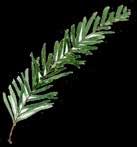
Unless otherwise noted, community field trips with LTC are FREE! Visit landtrust.org/events, or scan the QR code below to see full descriptions. Registration is required!
Winter Solstice Lantern Walk
Sunday, December 21 | 5-6pm
Seberon “Boo” Litzenburger Nature Preserve and Five Mile Creek School House, Emmet County
Winter Ecology Walk with Brad Von Blon
Friday, January 16 | 1-2:30pm
Sally and Art Hailand, Jr. / Helstrom Family Nature Preserves, Emmet County
Snowy Owl Festival - Snowshoe Lantern Walk
Saturday, February 7 | 6:30-8:30pm
William B. Derby, Jr. Nature Preserve, Mackinac County
Learn more about all the Snowy Owl Festival events at hesselschoolhouse.org
Open House at Enji-minozhiiyaamigak: The Place of Peacefulness Nature Preserve
Saturday, February 7 | 11am-3pm
Enji-minozhiiyaamigak: The Place of Peacefulness Nature Preserve, Charlevoix County
Mackinac Straits Raptor Watch (MSRW) and LTC are coming together to reinvigorate our citizen science volunteer project monitoring American Kestrels.
The American Kestrel is the smallest falcon found in our region, and nationally their populations have been in decline for over 40 years.
In 2012, LTC’s kestrel volunteer monitoring program started collecting crucial data for the Peregrine Fund and now the Cornell Lab of Ornithology. The data is used to help understand why the population has declined and how we can help them thrive on our lands. This research has included banding adults and chicks on several Conservancy protected properties.

Snowsfest 2026 - Snowshoe Lantern Walk
Friday, February 13 | 6:30-8:30pm


William B. Derby, Jr. Nature Preserve, Mackinac County
Learn more at lescheneaux.net/snowsfest.
Supranivian Arthropods with Quinn Sommer
Wednesday, February 18 | 2-4pm
Allan and Virginia McCune Nature Preserve, Emmet County
American Kestrel Presentation and Live Raptors in partnership with Mackinac Straits Raptor Watch Saturday, February 21 | 3:30-5pm Charlevoix Library Community Room, Charlevoix County

We are excited to work with our new volunteer kestrel data manager Kelly Davis (left) and to have MSRW’s expertise supporting this project.


Little
Address Service Requested
Find a trail near


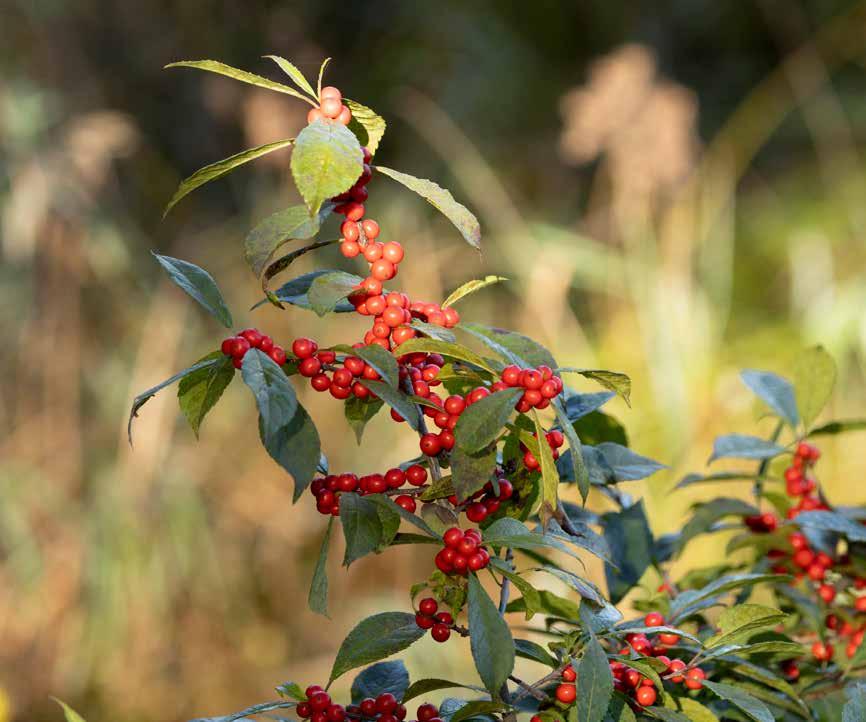
BOARD
EDUCATION
Andreae-Brown Family Environmental Education Endowment Fund Bolton Family Endowment Fund Conservation Easement Endowment Fund
Delia Fritz Endowment for Accessibility
Curtis Endowment Jerry and Eileen Fhaner Endowment Jinny McCoy Endowment
Joan R. and Charles M. Taylor II Memorial Endowment Fund
Les Cheneaux Endowment Fund
Liesel Litzenburger Meijer Endowment
Liesel Litzenburger Meijer Land Protection Director Endowment
Martha and Michael Cameron Endowment Fund
Marty and Jerry Richardson Endowment
Patricia and Thomas Jeffs Family Fund
Roney Family Endowment
Sowing the Seeds Education Endowment
Stewardship Endowment Fund
Stark Family Endowment
Vermilion Endowment Fund